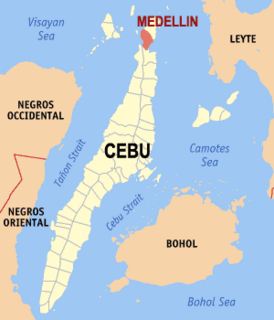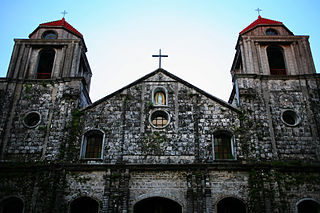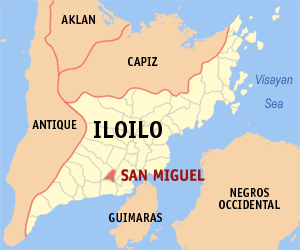This article needs additional citations for verification .(February 2013) (Learn how and when to remove this template message) |
| Belison | |
|---|---|
| Municipality | |
| Municipality of Belison | |
 Map of Antique with Belison highlighted | |
Location within the Philippines | |
| Coordinates: 10°50′N121°58′E / 10.83°N 121.97°E Coordinates: 10°50′N121°58′E / 10.83°N 121.97°E | |
| Country | |
| Region | Western Visayas (Region VI) |
| Province | Antique |
| District | Lone district |
| Founded | March 10, 1961 |
| Barangays | 11 (see Barangays) |
| Government [1] | |
| • Type | Sangguniang Bayan |
| • Mayor | Darell B. Dela Flor |
| • Vice Mayor | Reynaldo Jacaba |
| • Electorate | 8,564 voters (2016) |
| Area [2] | |
| • Total | 19.78 km2 (7.64 sq mi) |
| Population (2015 census) [3] | |
| • Total | 13,539 |
| • Density | 680/km2 (1,800/sq mi) |
| Demonym(s) | Belisongnon |
| Time zone | PST (UTC+8) |
| ZIP code | 5701 |
| PSGC | 060603000 |
| IDD : area code | +63 (0)36 |
| Climate type | tropical climate |
| Income class | 5th municipal income class |
| Feast date | February 2 |
| Patron saint | Our Lady of Candles (Nuestra Señora de la Candelaria) |
| Website | elgu |
Belison, officially the Municipality of Belison, is a 5th class municipality in the province of Antique, Philippines. According to the 2015 census, it has a population of 13,539 people. [3]

Antique is a province of the Philippines located in the region of Western Visayas. The province capital is San Jose, the most populous town in Antique. The province is situated in the western section of Panay Island and borders Aklan, Capiz and Iloilo to the east, while facing the Sulu Sea to the west.

The Philippines, officially the Republic of the Philippines, is an archipelagic country in Southeast Asia. Situated in the western Pacific Ocean, it consists of about 7,641 islands that are categorized broadly under three main geographical divisions from north to south: Luzon, Visayas, and Mindanao. The capital city of the Philippines is Manila and the most populous city is Quezon City, both part of Metro Manila. Bounded by the South China Sea on the west, the Philippine Sea on the east and the Celebes Sea on the southwest, the Philippines shares maritime borders with Taiwan to the north, Vietnam to the west, Palau to the east, and Malaysia and Indonesia to the south.
Contents
Belison is the smallest (in area and population) [4] and the youngest municipality in the province of Antique. [5]
























